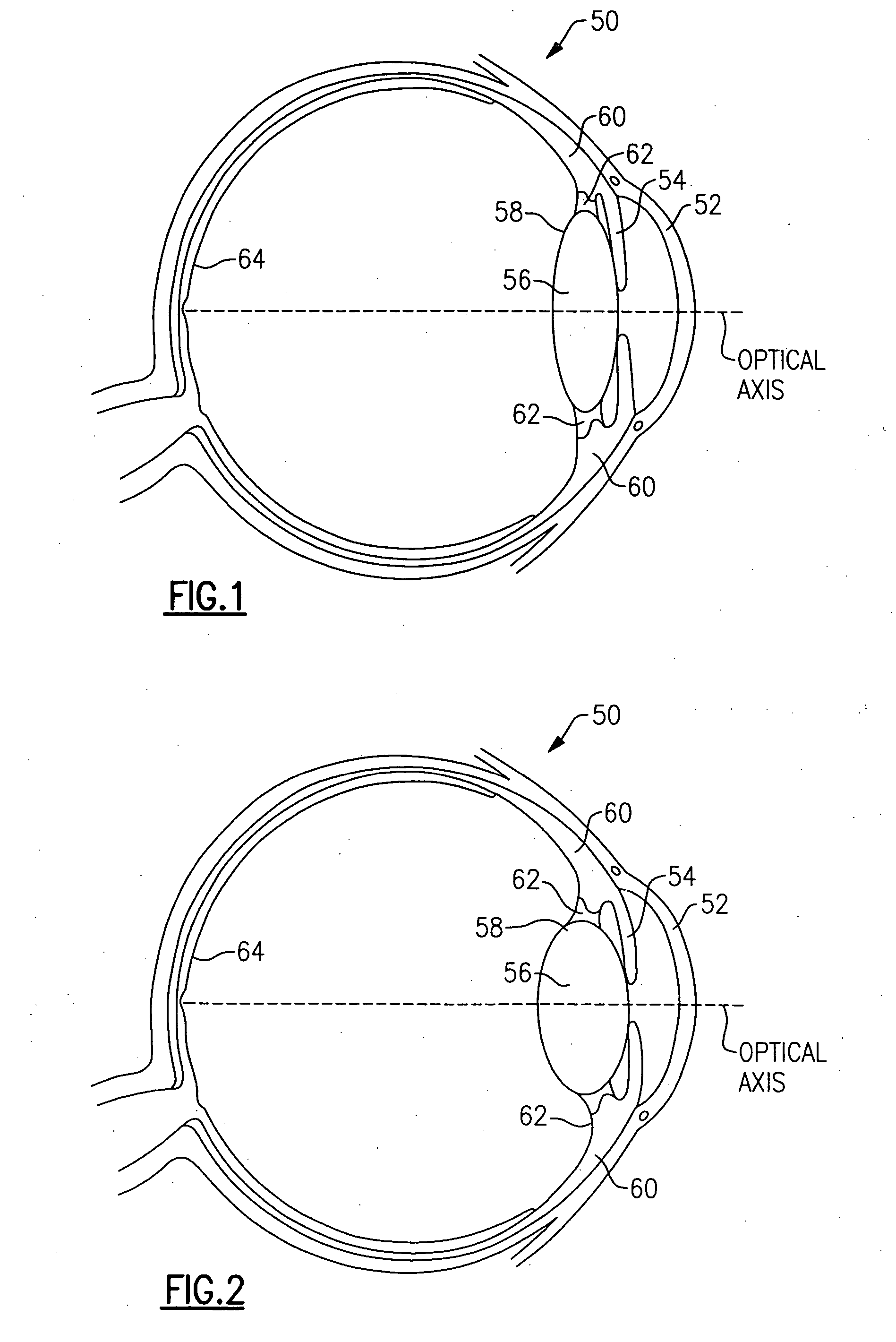Multi-component accommodative intraocular lens with compressible haptic
a multi-component, intraocular lens technology, applied in intraocular lens, prosthesis, medical science, etc., can solve the problems of adversely affecting the ability of known a-iol lens design, ocular physiology and wearer comfort, and inability to accurately measure the dimensions of capsular bags in live subjects
- Summary
- Abstract
- Description
- Claims
- Application Information
AI Technical Summary
Benefits of technology
Problems solved by technology
Method used
Image
Examples
Embodiment Construction
[0031]FIGS. 3 and 4A depict an exemplary embodiment of an A-IOL 100-1, which is configured for implantation into an evacuated capsular bag 58 (FIGS. 1, 2) in place of the natural lens 56, and is further configured to change the refractive properties of the eye in response to the eye's natural process of accommodation. A Cartesian coordinate system is shown in FIG. 3 to orient the reader, as the optical axis of the A-IOL as shown would be aligned with optical axis of a patient's eye. This coordinate system is depicted purely to facilitate the description herein; thus, it is not intended to limit the possible orientations that the A-IOL may assume during use. For example, the A-IOL 100-1 may rotate about, or may be displaced along, the optical axis during use without detracting from the performance of the lens system. The terms “anterior” and “posterior” refer to the depicted directions on the optical axis 98 of the A-IOL 100-1. When the A-IOL 100-1 is implanted in an eye, the anterio...
PUM
 Login to View More
Login to View More Abstract
Description
Claims
Application Information
 Login to View More
Login to View More - R&D
- Intellectual Property
- Life Sciences
- Materials
- Tech Scout
- Unparalleled Data Quality
- Higher Quality Content
- 60% Fewer Hallucinations
Browse by: Latest US Patents, China's latest patents, Technical Efficacy Thesaurus, Application Domain, Technology Topic, Popular Technical Reports.
© 2025 PatSnap. All rights reserved.Legal|Privacy policy|Modern Slavery Act Transparency Statement|Sitemap|About US| Contact US: help@patsnap.com



